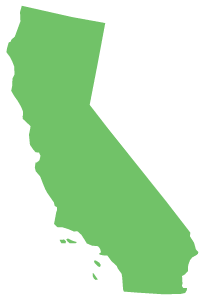2020 State Standard of Excellence
Leading Examples
1. Strategic Goals
Did the Governor have public statewide strategic goals?

CO
Statewide
Launched in 2019, Colorado’s Governor’s Dashboard outlines four high-priority strategic goals: tax reform and economic development, energy and renewables, health, and education and the workforce. Each high-priority strategic area is supported by a cabinet working group as well as aligned goals, metrics, and actions contained within agency performance plans. The governor’s annual budget request also links these goals to specific agency activities and outcomes.
2. Performance Management / Continuous Improvement
Did the state or any of its agencies implement a performance management system aligned with its statewide strategic goals, with clear and prioritized outcome-focused goals, program objectives, and measures; and did it consistently collect, analyze, and use data and evidence to improve outcomes, return on investment, and other indicators of performance?

MN
Statewide
In response to COVID-19, the state built a comprehensive public data dashboard that tracks health and economic data, including response data on hospital capacity, critical care supplies, child care, and funding. The dashboard also tracks the disparate impacts of the virus on communities of color to enhance collaboration with stakeholders and “eliminate systemic barriers so communities of color and indigenous communities can recover with dignity and resiliency.” Such a collaboration includes an ongoing partnership with J-PAL North America that is leveraging the data to identify how to increase take up of COVID-19 testing in Black and Latinx communities based on local needs and preferences.
3. Data Leadership
Did the governor’s office or any state agency have a senior staff member(s) with the authority, staff, and budget to collect, analyze, share, and use high-quality administrative and survey data—consistent with strong privacy protections— to improve (or help other entities including, but not limited to, local governments and nonprofit organizations improve) federal, state, and local programs? (Example: Chief Data Officer)

CT
Statewide
A 2018 Connecticut law formalized the position of Chief Data Officer within the Office of Policy and Management and created the Connecticut Data Analysis Technology Advisory Board. The law required each state agency to designate an agency data officer to manage high-value data sets and coordinate data-related activities with the state Chief Data Officer. The Chief Data Officer, along with individual agency data officers, are required to biannually update the state data plan, which covers open data and creates data standards for agencies. The plan also contains 11 principles and accompanying practices that all agencies should adopt in order to improve their management, use, sharing, and analysis of data. In 2019, the Office of Policy and Management created a new Data and Analytics Policy unit to further support the management, use, sharing, and analysis of data across state agencies.
4. Data Policies / Agreements
Did the state or any of its agencies have data-sharing policies and data-sharing agreements—consistent with strong privacy protections—with any nonprofit organizations, academic institutions, local government agencies, and/or federal government agencies that were designed to improve outcomes for publicly funded programs, and did it make those policies and agreements publicly available? (Example: data-sharing policy, open data policy)

OH
Multiple agencies
In April 2019, Ohio’s Governor signed an executive order consolidating state data systems into the InnovateOhio Platform, which uses data as “a shared strategic asset” whose “value is multiplied when data sets are linked across programs and organizations” through data integration and management tools. The executive order created a presumption of data-sharing between state agencies, except where a specific legal prohibition is identified in writing. Since its launch, InnovateOhio and the Ohio Department of Administrative Services have collaborated with state agencies to incorporate 1,600 information systems into the State’s cloud environment. As of June 2020, the InnovateOhio Platform recovered over $1 million in duplicate payments by applying a data analytics tool to state agency spending ledgers.
5. Data Use
Did the state or any of its agencies have data systems consistent with strong privacy protections that linked multiple administrative data sets across state agencies, and did it use those systems to improve federal, state, or local programs?

IN
Statewide
The Indiana Management Performance Hub (MPH), overseen by the state’s Chief Data Officer, houses the integrated Education and Workforce Development database, which brings together data from 12 state agencies, including: the Commission for Higher Education, Department of Education, Department of Health, Department of Corrections, Department of Workforce Development, and Family and Social Services Administration. In addition, MPH has created integrated databases to address pressing program and policy issues related to COVD-19, opioids, Medicaid, fiscal transparency, and other areas. MPH has been at the forefront of using data to drive decision-making for Indiana’s COVID-19 response, including a study to better understand the prevalence of the coronavirus and/or its antibodies.
6. Evaluation Leadership
Did the governor’s office or any state agency have a senior staff member(s) with the authority, staff, and budget to evaluate its major programs and inform policy decisions affecting them? (Example: Chief Evaluation Officer)

TN
Statewide
Founded in 2019, Tennessee’s Office of Evidence and Impact is led by the state’s Director of Evidence and Impact. To propagate Tennessee’s evidence-based budgeting efforts, the Office defined four tiers of evidence, conducted program inventories, developed evidence reviews, and provided evidence-building technical assistance.
7. Evaluation Policies
Did the state or any of its agencies have an evaluation policy, evaluation plan, and research/learning agenda(s), and did it publicly release the findings of all completed evaluations?

KY
Multiple agencies
The Kentucky Center for Statistics (KYSTATS) has a 2020-22 Research Agenda, which details four primary research areas to identify barriers to education and workforce opportunities: (1) expand data access and data use to inform equity issues; (2) evaluate outcomes and barriers for education and workforce programs over time; (3) connect supply and demand of the state’s future workforce; and (4) measure the impact of out-of-state education and workforce migration. All research results are made publicly available.
8. Evaluation Resources
Did the state or any of its agencies invest at least 1% of program funds in evaluations?

MN
Single agency
A 2017 law created Minnesota’s Opiate Epidemic Response grant program. The FY 2021 budget includes $300,000 for Minnesota Management and Budget to conduct experimental and quasi-experimental design impact evaluations for opiate epidemic response grant activities, which is slightly more than 1.1% of the agency’s $27 million general fund budget.
9. Outcome Data
Did the state or any of its agencies report or require outcome data for its state-funded programs during their budget process?

CO
Statewide
The 2013 Colorado State Measurement for Accountable, Responsive and Transparent Government (SMART) Act required all Colorado state agencies to submit annual performance reports to the state legislature as part of the state’s budget process. These reports include: (1) performance measures for the major functions of the department; (2) performance goals for at least the following three years; (3) a description of the strategies necessary to achieve those goals; and (4) a summary of the department’s most recent performance evaluation. In addition, the state’s FY 2020-2021 budget development instructions (pp. 10-12) prioritize new program requests “based on the evidence and body of research supporting the program’s effect on desired outcomes and proposed implementation plan.” In the FY 2020-2021 budget cycle, the state applied an evidence continuum to budget requests and used that criteria to inform resource allocation decisions.
10. Evidence Definition and Program Inventory
Did the state or any of its agencies release a common evidence framework, guidelines, or standards to inform its research and funding decisions and make publicly available an inventory of state-funded programs categorized based on at least two tiers of evidence?

NM
Multiple agencies
A 1999 New Mexico law required all state agencies to submit annual performance-based budget requests that include outputs, outcomes, performance, and evaluation data. The 2019 Evidence and Research Based Funding Requests Act amended the 1999 law by defining four tiers of evidence and further requiring certain state agencies (selected annually by the state legislature), to “identify each sub-program as evidence-based, research-based, promising, or lacking evidence of effectiveness” and report on the amount allocated for each of these evidence tiers. The law builds on New Mexico’s long-standing series of inventory and cost-benefit reports in the areas of children’s behavioral health; adult behavioral health; early education; child welfare; criminal justice; healthcare, infant and maternal health; and education.
11. Cost-Benefit Analysis
Did the state or any of its agencies assess and make publicly available the costs and benefits of public programs?

WA
Multiple agencies
A 2013 Washington State law (pp. 105-106) directed the Department of Corrections, in consultation with the Washington State Institute for Public Policy (WSIPP), to: (1) compile an inventory of existing programs; (2) determine whether its programs were evidence-based; (3) assess the effectiveness of its programs, including conducting a cost-benefit analysis; and (4) phase out ineffective programs and implement evidence-based programs. As a result of this and similar laws, WSIPP has published cost-benefit analyses in a wide variety of issue areas over the past 10 years, including a 2020 report on the state’s extended foster care program. The WSIPP cost-benefit framework has been widely adopted by governments across the country.
12. Use of Evidence in Grant Programs
Did the state or any of its agencies (1) invest at least 50% of program funds in evidence-based solutions or (2) use evidence of effectiveness when allocating funds to eligible grantees (including local governments) from its five largest competitive and noncompetitive grant programs?

NV
Single agency
Since 2017, the Nevada Department of Education has allocated 100% of the state’s $9.5 million in federal Title I school improvement funds to districts and schools for interventions backed by strong, moderate, or promising evidence (using the top three tiers of evidence as defined by the federal Every Student Succeeds Act [ESSA]). This represented an increase over the approximately 15% of funds that had been allocated based on level of evidence in the 2016-2017 school year. Grant recipients may set aside funds to monitor and evaluate the identified evidence-based approaches to ensure the investments yield a positive impact on student outcomes.
Beginning in 2017, the Nevada Department of Education also began requiring school districts to invest awarded funds from two additional federal grant programs in interventions that meet one of the four tiers of evidence (strong, moderate, promising, and under evaluation) defined in ESSA: (1) ESSA Title IV-B ($9 million in 2017-2018), for the competitive 21st Century Community Learning Centers grants; and (2) ESSA Title IV-A grants ($9.4 million in federal funds to Nevada in 2017-2018 to increase students’ access to a well-rounded education), where applications with stronger evidence are considered for funding before other applications.
Starting in 2013, the Nevada State Legislature passed a series of laws with strong evidence requirements that aligned state education funding with ESSA’s tiered evidence definition. The following six programs require grantees to use interventions that meet one of the four ESSA evidence tiers (though supplemental curriculum and professional development must meet the top three tiers: strong, moderate, or promising):
- Zoom School Program, first enacted in 2013, supports competitive grants ($50 million per year in state education funds) to help school districts provide English language instruction to non-native speakers;
- Nevada Turnaround grant program, authorized in 2017, is a competitive grant program ($2 million in state education funds per year) that helps underperforming schools implement their school improvement plans;
- SB 178, authorized in 2017, gives weighted formula grants to support extended learning opportunities in schools (approximately $1,200 for every eligible student; 2019 total funding of $70 million in state funds per year);
- College and Career Readiness, a competitive grant program ($4.9 million in state education funds per year), created in 2017, helps school districts establish advanced academic programs for middle school and high school students;
- Victory Schools initiative ($25 million in state education funds per year), created in 2015 (and reauthorized in 2019), aims to improve results in the state’s lowest-performing schools in the most underprivileged zip codes; and
- Read by Grade Three Act ($31 million in state funds in 2019-2020), amended in 2019, allocates funds to school districts through a formula grant process to support student literacy.
13. Innovation
Did the state or any of its agencies have staff, policies, and processes in place that encouraged innovation to improve outcomes?

CA
Statewide
In 2020, California launched the California COVID Assessment Tool to identify potential COVID-19 hotspots, predict which hospitals might reach capacity, and proactively allocate resources to such hotspots. This innovative assessment tool is a “model of models,” which incorporates the statistical projections of several leading research institutions. Notably, the assessment tool allows residents to create their own scenarios for transmission potential in the coming months depending on specific public health guidelines. Further, California released the source data sets on California’s Open Data Portal, allowing the public to examine the data underlying the Assessment Tool.
The California Government Operations Agency (GovOps), which serves as an umbrella organization for the state’s innovation work, is designed to institutionalize policies, tools, and training that can drive its mission to modernize the processes of government through lean process improvement, data, leadership, and performance improvement. GovOps brings together statewide initiatives such as the Lean Academy, California Leadership Academy, the Office of Digital Innovation, and California’s Open Data Portal resources. As well, the California Health and Human Services Agency has an Office of Innovation that focuses on improving programs and services through the use of tools such as human-centered design and data analytics.
14. Contracting for Outcomes
Did the state or any of its agencies enter into performance-based contracts and/or use active contract management (frequent use of data and regular communication with providers to monitor implementation and progress) to improve outcomes for publicly funded programs?

RI
Multiple agencies
Since 2015, Rhode Island’s Department of Children, Youth, and Families has worked to reform and restructure the department’s procurement. As part of this initiative, the department executed $90 million in 116 results-driven contracts that require providers to meet outcome goals rather than output metrics. As a result, the Department has reduced the number of children in group care by over 20% since 2015, experienced a 50%expansion of foster care resources for the most challenging adolescents, doubled the capacity of high-quality family visitation and reunification services, and made start-up investments of $1.2 million in nonprofit community organizations to support new and expanded programming.
Also in 2015, the Department of Labor and Training launched Real Jobs Rhode Island, an innovative, $14 million workforce program that used performance-based metrics and active contract management. As a result, the state reconfigured the way it manages and evaluates its job training programs to capture meaningful, long-term employment outcomes and created a Strategic Coaching Procurement Playbook, which includes specific strategies and sample language for using active contract management to achieve better results.
Rhode Island Works, administered by the Department of Human Services, also used performance payments and active contract management to improve its job search services, which, in 2015, ranked at the bottom nationally on the federal measure of work participation rate (which counts the number of recipients engaged in work-related activities as a share of all work-eligible clients receiving benefits). To improve the program, the Department partnered with the Harvard Kennedy School Government Performance Lab to incorporate performance-based payments for self-sufficiency outcomes and deploy active contract management. As a result, the federal participation rate improved by one-third within the first six months after these reforms were launched.
15. Repurpose for Results
Did the state or any of its agencies shift funds away from any practice, policy, or program that consistently failed to achieve desired outcomes?

PA
Single agency
Since 2013, the Pennsylvania Department of Corrections has set performance targets for its community corrections program through performance-based contracts. Providers who meet recidivism prevention goals receive a 1% increase in their rate, while providers who fail to meet targets for two consecutive years can have their contracts terminated. Following the introduction of these performance goals, the program’s recidivism rate dropped by 11.3% in 2014, another 16% in 2015, and an additional 11% in 2016. In 2018, the Commonwealth Foundation’s report on criminal justice reform in Pennsylvania recommended expanding the program to other areas based on these results.
